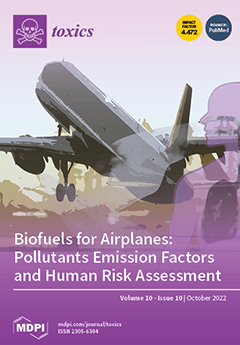It is important to control airborne particles in residential houses for protecting human health. Indoor particulate matter of <2.5 μm (PM
2.5) can be effectively monitored and managed using an air purifier. In this study, the actual clean air delivery rates in residential houses (CADR
Actual) were acquired by comparing decay rates of fine particles with and without operations of the air purifier under actual conditions, following the standard CADR of an air purifier obtained in a closed test chamber. The measurements of CADR
Actual at different outdoor PM
2.5 concentrations over a month in two residential houses revealed different airtightness levels, compared to the standardized clean air delivery rate of the air purifier (CADR
AP). Air changes per hour at 50 Pa (ACH50) was 4.8 h
−1 for “house A” (built in 2007) and 2.1 h
−1 for “house B” (built in 2018). The CADR of the air purifier used in this study was 10.6 m
3/min, while the averaged CADR
Actual at the “house A” was 7.2 m
3/min (approximately 66% of the CADR of the air purifier) and 9.5 m
3/min at “house B” (approximately 90% of the CADR of the air purifier). Under the outdoor PM
2.5 concentrations of <35 μg/m
3, the averaged CADR
Actual of house A and house B were 7.8 ± 0.3 and 9.7 ± 0.4 m
3/min, respectively. However, under the outdoor PM
2.5 concentrations of >35 μg/m
3, the analogous averaged concentrations were 6.8 ± 0.6 and 9.6 ± 0.3 m
3/min for houses A and B, respectively. The measured CADR
Actual agreed well with the theoretical estimates of CADR
Actual acquired by the mass balance equation using the infiltration rate of ACH50/20. We also estimated CADR
Actual/CADR
AP for house C built in 2017, where the ACH50 was 1.8 h
−1. Overall, this study demonstrated how CADR
Actual/CADR
AP of an air purifier at residential houses can be predicted according to outdoor PM
2.5 concentration and airtightness of the house. As shown, it can be closer to 1 at lower ACH50 houses and at lower outdoor PM
2.5 concentrations.
Full article






